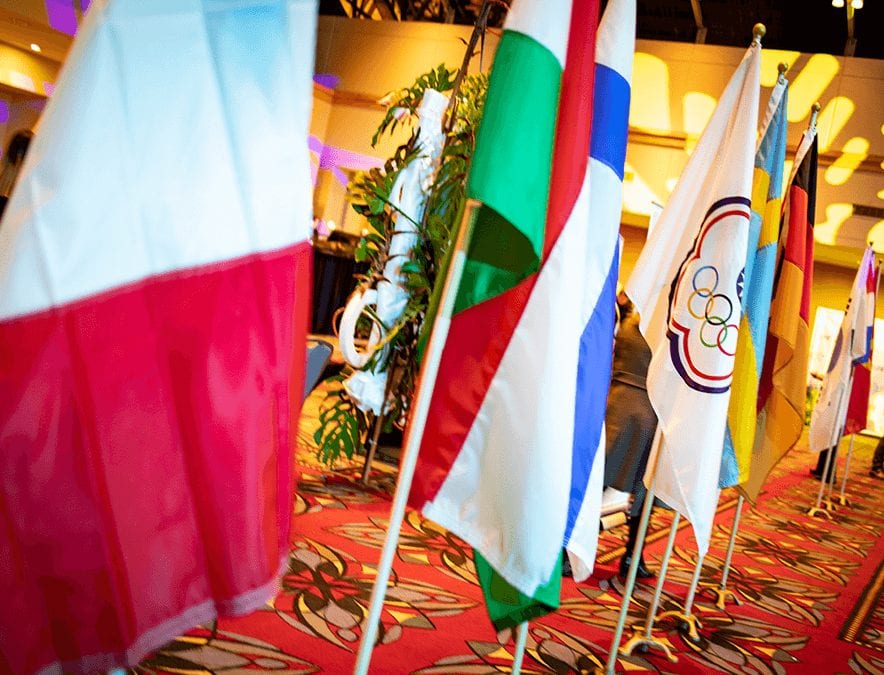The FTD World Cup, staged March 1-3 at the Philadelphia Flower Show, is an international floral competition held approximately every four to six years around the globe. Representatives from 23 countries competed in the world-class event, held in the U.S. for the first time since 1985, when it took place in Detroit.
“Floral-forward inspiration displayed by the world’s top floral artists.”
“It is said to be the ‘Olympics of Floral Design’ and is regarded as a career-defining competition since the winner is extremely sought after for demonstrations, presentations and workshops throughout the world,” says Emily Bucholz, director of marketing communications, FTD Florist Division. “Our goals were to unite the international floral community in our great nation and introduce our North American florists to the incredible floral design talent throughout the world.”
Over three days, on a public stage witnessed by the floral community and tens of thousands of flower-show-goers, competitors produced the profession’s best expression of their craft, each one a national winner in his or her own right. Their level of floral artistry, precise execution of technique and highly personal interpretation of six distinct design challenges was a delight to watch.
Australia’s Bart Hassam was named the 2019 World Cup Champion at the conclusion of the three-day competition. Other winners included first runner-up Natalia Zhizhko from Russia and second runner-up Tamás Mezöffy from Hungary.
Covering the FTD World Cup gave me a front-row seat to watch each of the competitors whose unique and inventive floral pieces elevate the art of floral design. There are countless ideas from which to draw inspiration. Here are the freshest floral ideas to borrow for your floral department.
MODERN METALS
Shiny steel, glowing copper and brass, and hammered zinc offer organic elemental finishes for a stunning contrast to fresh flowers and foliages. The designs shown here were created for the first World Cup challenge, “Harmony in Architecture.”
DANCE AND MOVEMENT
Botanical ingredients harvested from the meadow and field lend a kinetic quality to singular and stunning hand-tied bouquets. The designs shown here were created for the second World Cup challenge, “Hand-Tied Bouquet – Strength of Color.”
SHOWCASING INDIVIDUAL STEMS
Single stems arranged together create patterns that enliven floral compositions. The World Cup designers used numerous inventive ways to gather, group and hang individual flower and foliage stems into a greater whole, created for the third World Cup challenge, “Table for Two – The Power of Flowers.”
TWIGS AND BRANCHES
Branches in many colors and configurations can provide the structural context for floral design, illustrated by the fourth World Cup challenge, “Season of Bloom,” using U.S.-grown botanicals supplied by Certified American Grown Flowers.
BOLD FORMS WITH FOLIAGE
Drawing from the symbolism of a tree, the World Cup’s 10 semifinalists were tasked with designing pieces that expressed personal strength and growth. Their use of bold foliages and forms produced dramatic results.







